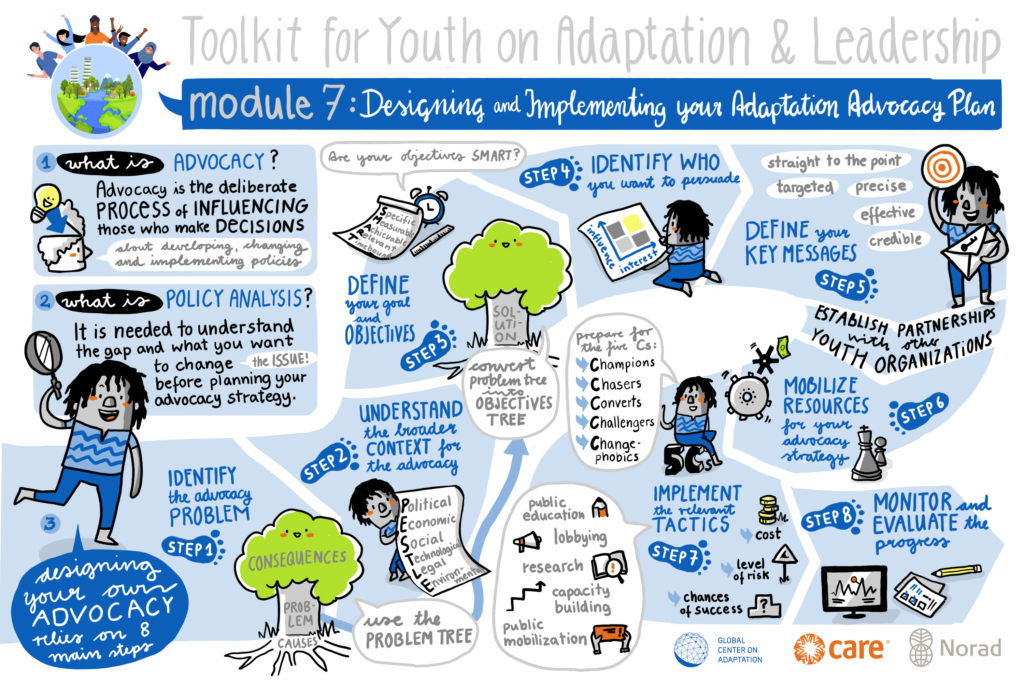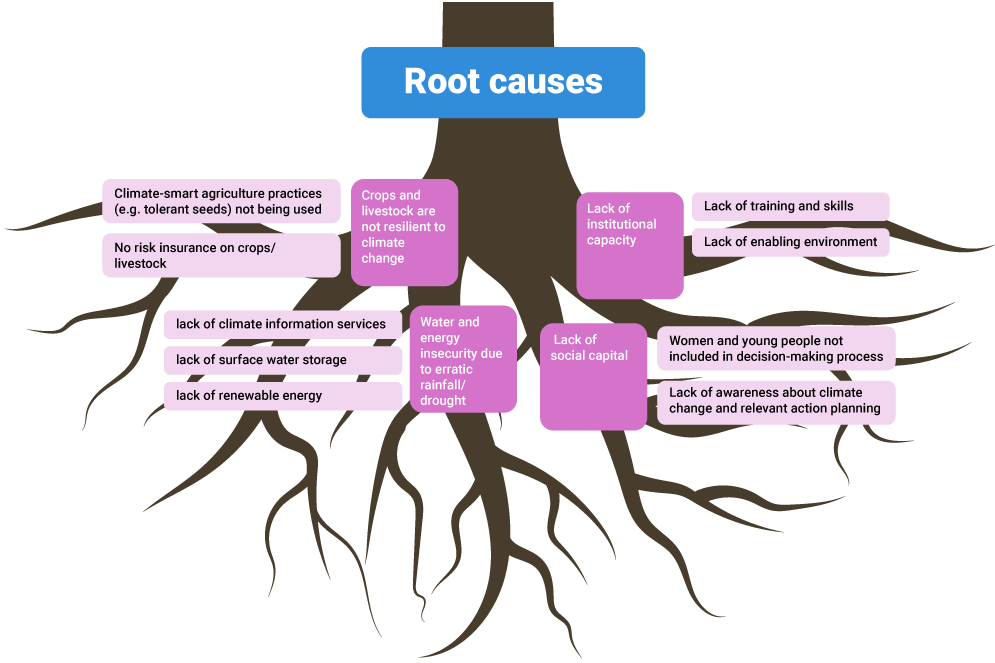Define your advocacy goals and objectives
Here, the question is: What must change? This high-level thinking will help you define your goals. Once you have identified your goals, you can then flesh out the specific objectives that support them.
- A goal defines what policies need to be created, changed or enacted and what impact they will have on climate change adaptation. A goal should be as specific as possible, highlighting who needs to make the policy change and when.
- An objective defines what needs to happen to achieve this goal. You will likely have multiple objectives for each goal.
TIP: Download this advocacy strategy template and use it to define your goals, objectives and tactics.
Example of a climate change adaptation advocacy goal with supporting objectives
After doing your policy analysis, you might have identified that your national government does not have a National Adaptation Programme of Action (NAPA) in place. Knowing that a NAPA is vital to guide adaptation policy, you may then decide that you want to advocate for the government to develop a NAPA.
Your goal could be:
- By 2026, the Ministry of Environment will have submitted a NAPA, that has been developed in collaboration with civil society and youth organizations, to the UNFCCC.
Your objectives could be:
- By the end of 2023, the Ministry of Environment has agreed to develop a NAPA.
- By the end of 2024, the Ministry of Environment has conducted dialogues with civil society and youth organizations working on climate change adaptation issues to inform the adaptation priorities listed in the NAPA.
- By the end of 2025, the Ministry of Environment has invited civil society and youth climate advocates to review the NAPA, and share inputs for improvement, before submitting the final version.
Make sure your goals and objectives are SMART
When defining your goals and objectives, it pays to be specific. Aim for goals and objectives that are SMART. This means they are Specific, Measurable, Achievable, Relevant and Time- bound.
In the real world, it may not be possible to meet all the SMART criteria. Your goals and objectives might have just some of the main elements. So, it may be more realistic to see SMART goals as something to work towards rather than a hard-and-fast rule.
Your analysis with the problem tree, and understanding of the broader policy context from your PESTLE analysis, will help you define your SMART goals and objectives.
One you have clarified your goals and objectives you can test them against what is known as a Theory of Change. This is a testable hypothesis used to guide decision making and action during the development and execution of an advocacy strategy. It explains the process of change and helps you evaluate whether your advocacy actions are leading to the expected outcomes.
Example of a theory of change
A Theory of Change is typically expressed in the format: “If X … then Y … because …”
IF youth organizations are empowered to engage in analysis and decision-making to inform climate change adaptation
THEN government will adopt better climate resilience and adaptation practices
BECAUSE youth organizations will hold government accountable and input on adaptation policy processes.













